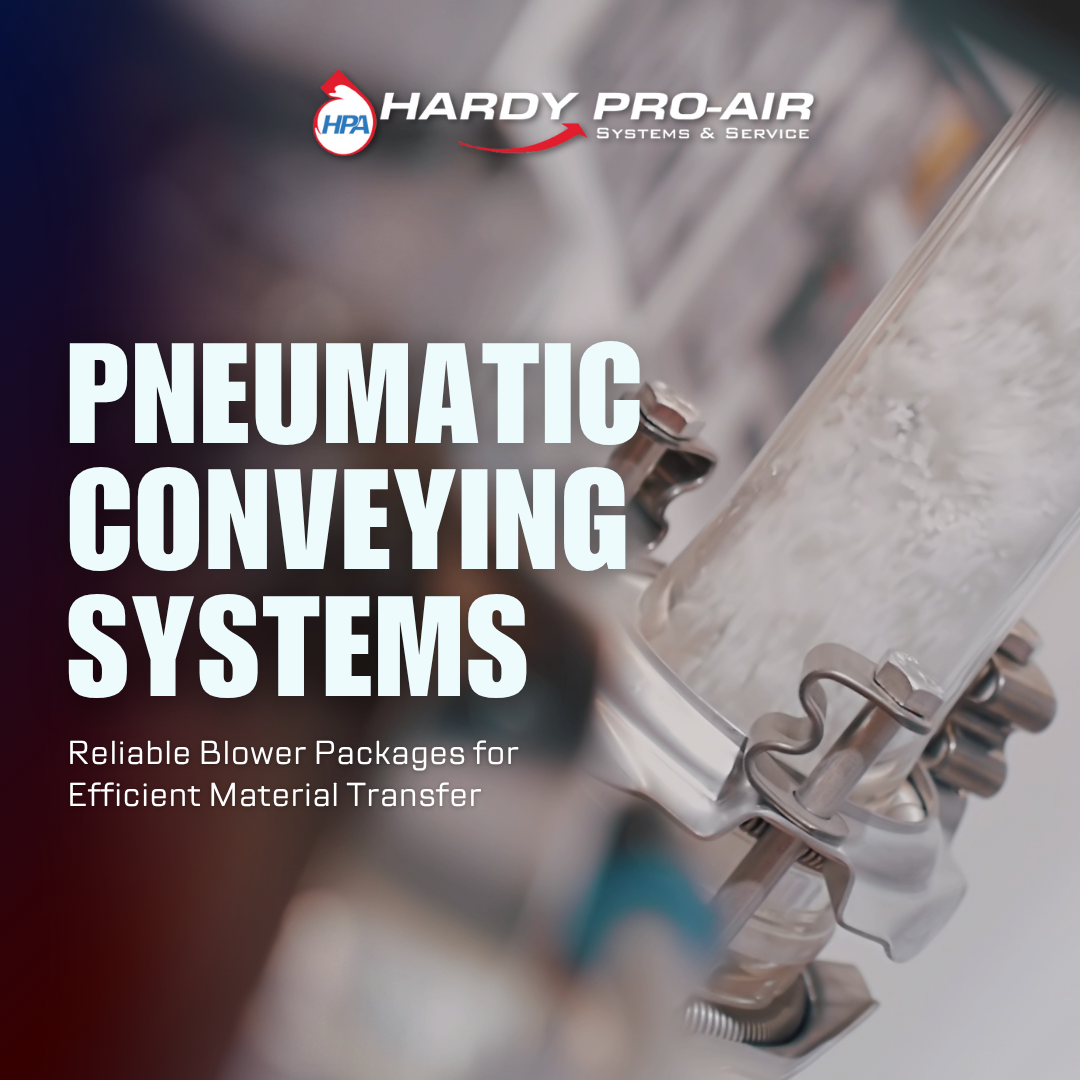
Introduction to Pneumatic Conveying Systems: Fundamentals & Key Components
When it comes to moving bulk materials efficiently and cleanly, pneumatic conveying systems are an excellent choice. By using air to transport materials through a pipeline, these systems reduce maintenance, improve safety, and keep materials enclosed from start to finish.
At Hardy Pro-Air, we engineer and manufacture complete blower packages to power pneumatic conveying systems that perform reliably across industries such as plastics, food processing, wastewater treatment, and chemicals. Whether you’re conveying powders, pellets, or granules, understanding the basics helps you choose the right system for your operation.
How Pneumatic Conveying Works
A pneumatic conveying system uses airflow to move bulk materials through a network of pipes or tubing. The air can be supplied under positive pressure (blowing) or negative pressure (vacuum) depending on the material and distance involved.
There are two main conveying types:
- Dilute Phase Conveying: Materials are suspended in the air and move at high velocity. Ideal for lightweight, non-abrasive materials.
- Dense Phase Conveying: Materials move in a slower, more concentrated flow. Best for fragile or abrasive products that need gentle handling.
Hardy Pro-Air engineers customize every system to match material properties and process requirements.
Key Components of a Pneumatic Conveying System
1. Blower or Vacuum Pump
This is the heart of the system. Blowers provide the air pressure or vacuum needed to move materials. Hardy Pro-Air offers a range of blower packages built for efficiency and consistent performance.
2. Rotary Airlock Valve
Also called a star valve, it feeds material into or out of the conveying line while keeping the system sealed. It helps maintain steady flow and system pressure.
3. Conveying Line
The pipeline carries material from pickup to discharge. Construction materials such as carbon steel or stainless steel are chosen based on abrasion, temperature, and cleanliness needs.
4. Filters and Separators
Filters or cyclones separate the material from the conveying air at the discharge point, improving collection efficiency and reducing dust.
5. Controls and Instrumentation
Automation and sensors help optimize airflow, monitor performance, and reduce energy use.
Why Choose Pneumatic Conveying
- Cleaner operation with enclosed systems
- Flexible layout options for long distances or multiple points
- Low maintenance with fewer moving parts
- Safe and efficient material handling
Hardy Pro-Air: Your Partner in System Design
From design and fabrication to installation and service, Hardy Pro-Air delivers complete blower packages to power pneumatic conveying solutions. Our experience with blower packages, airlocks, and system integration helps reduce downtime and improve productivity.
Contact us today to discuss your application or schedule a system evaluation.


